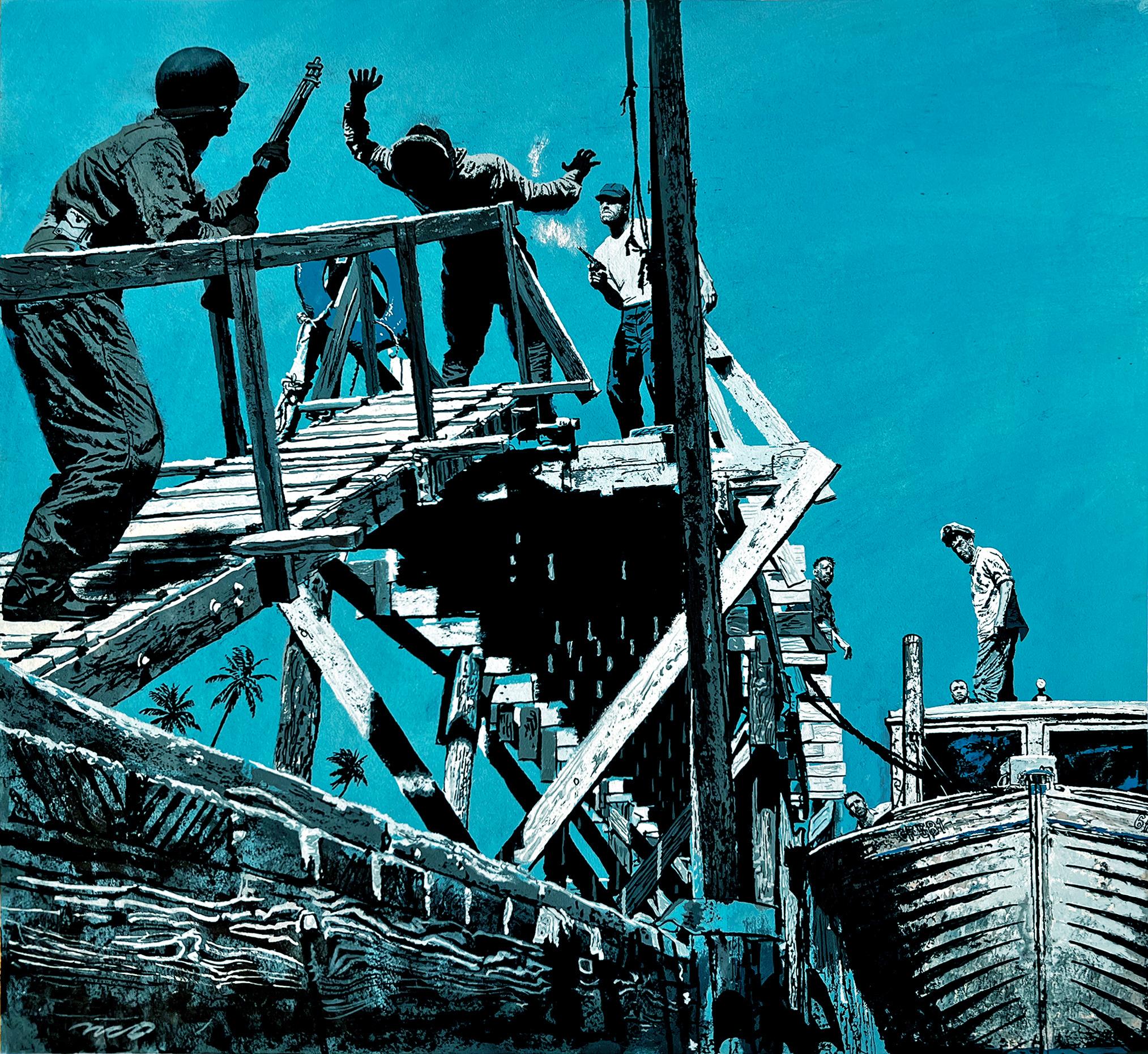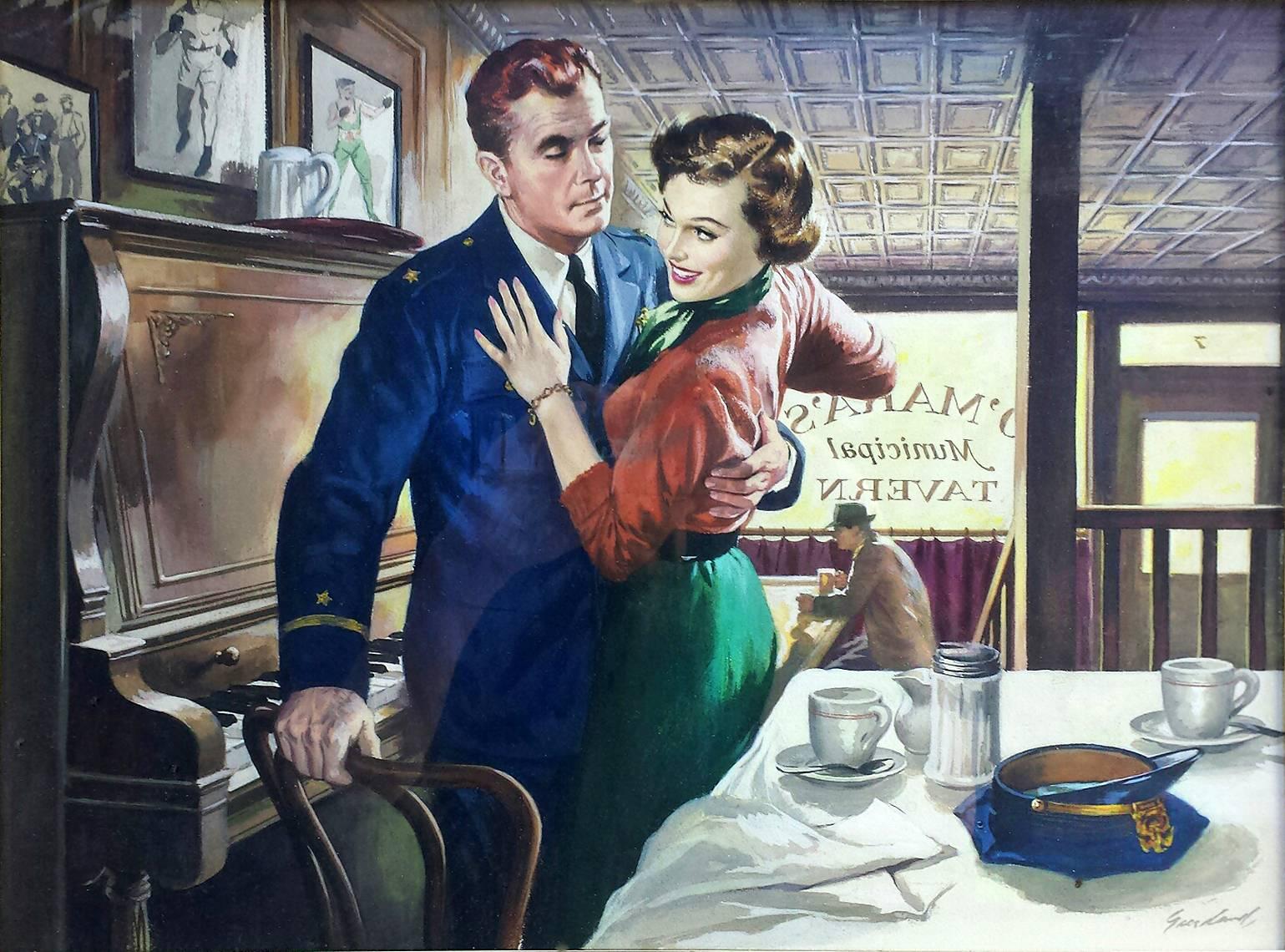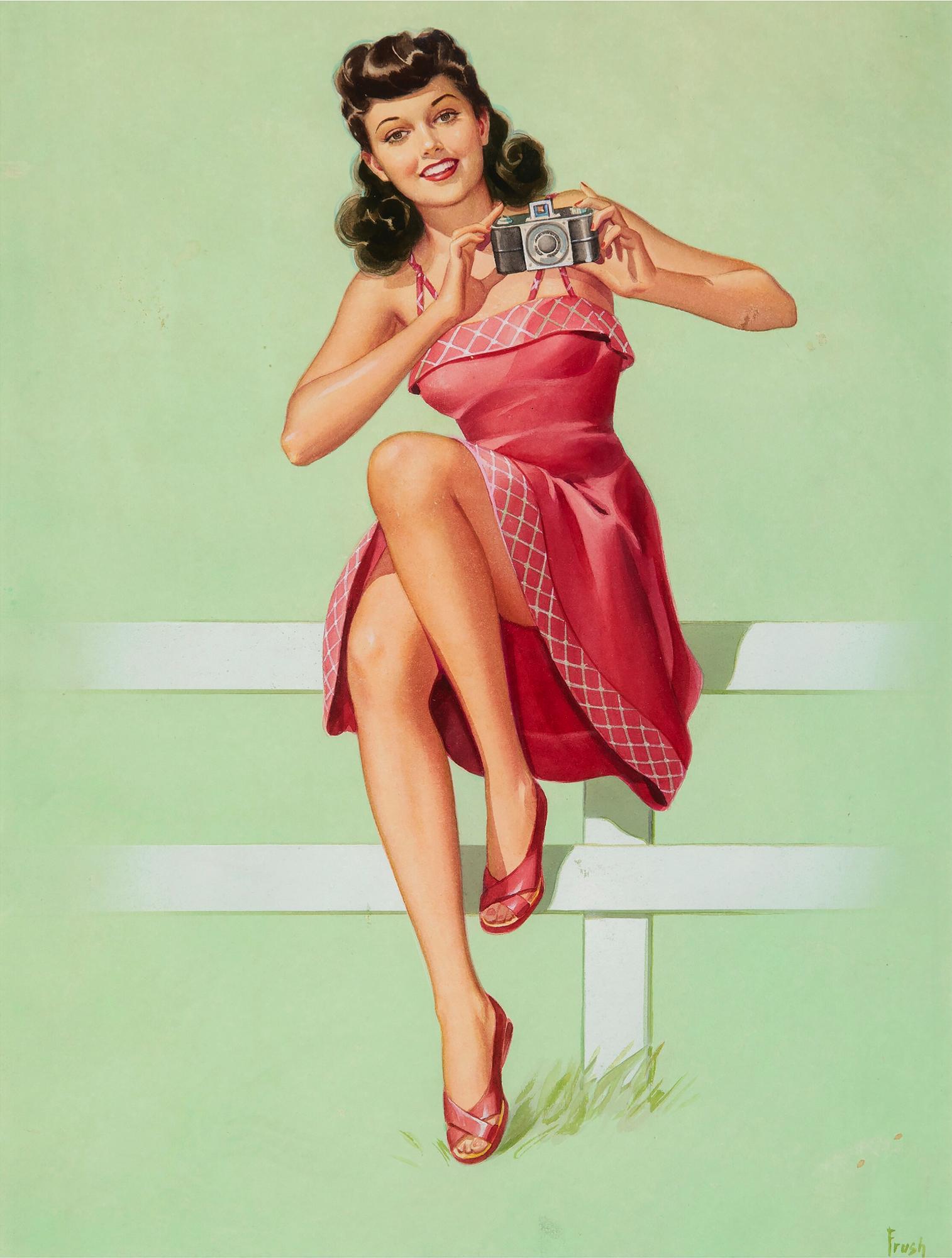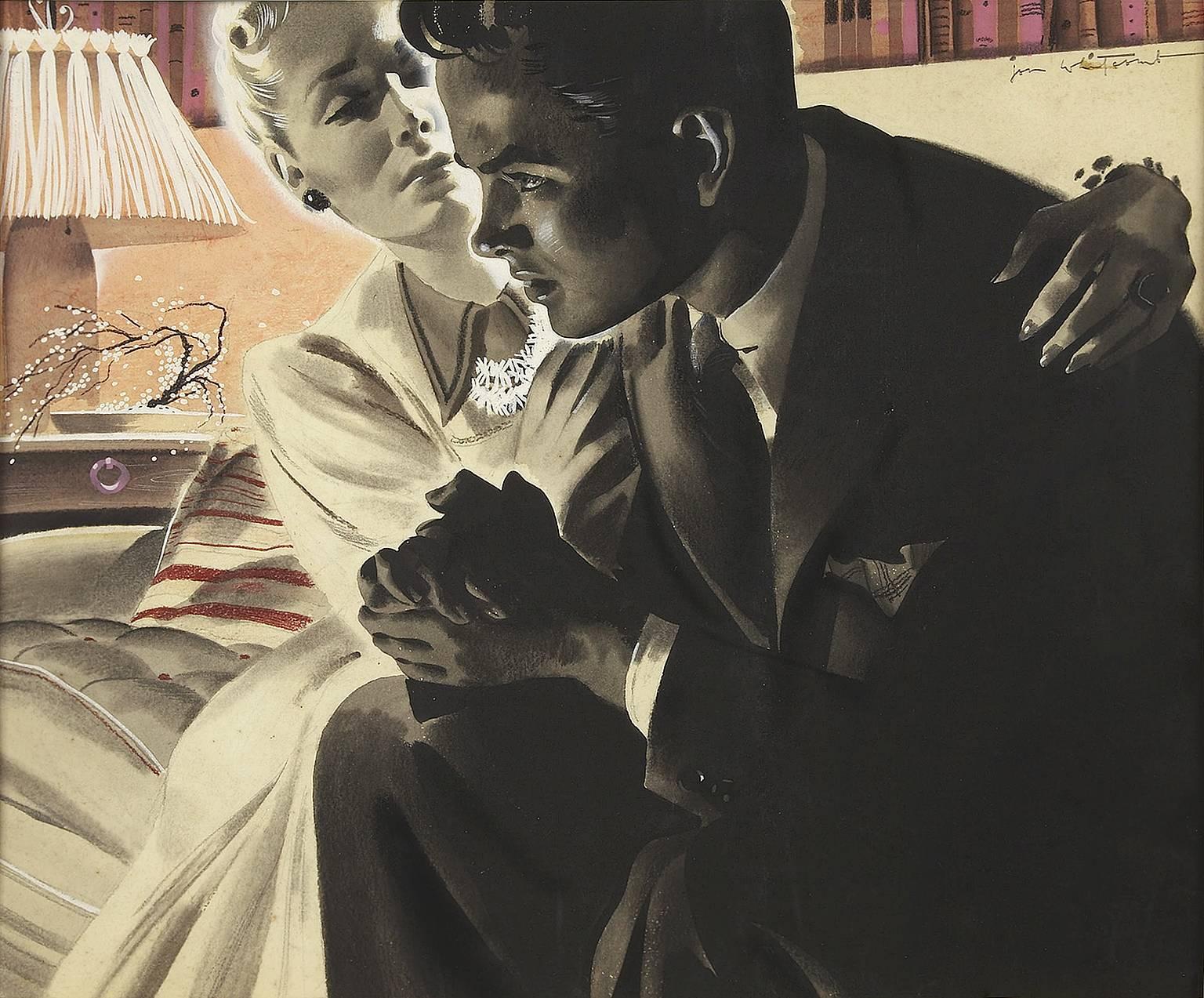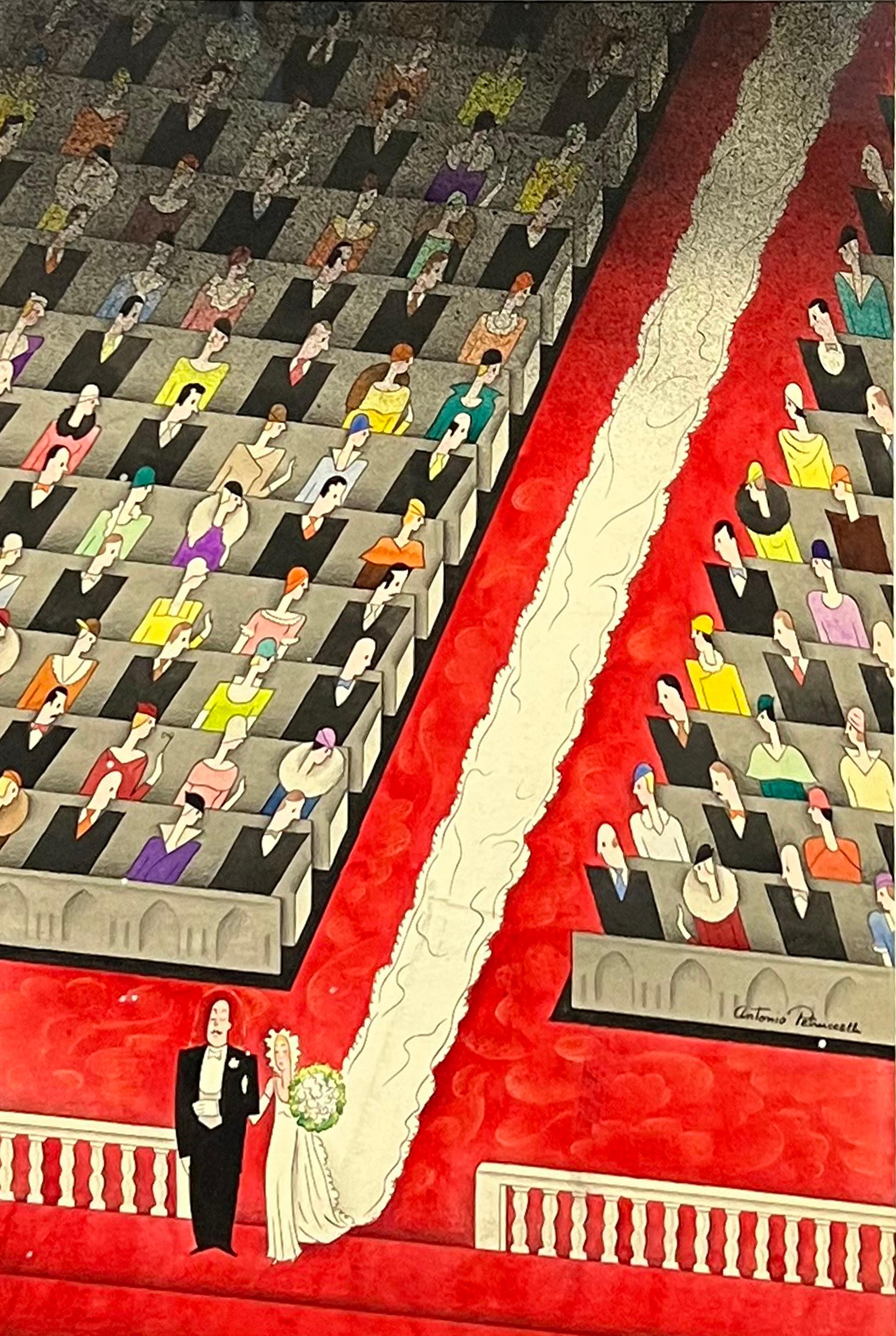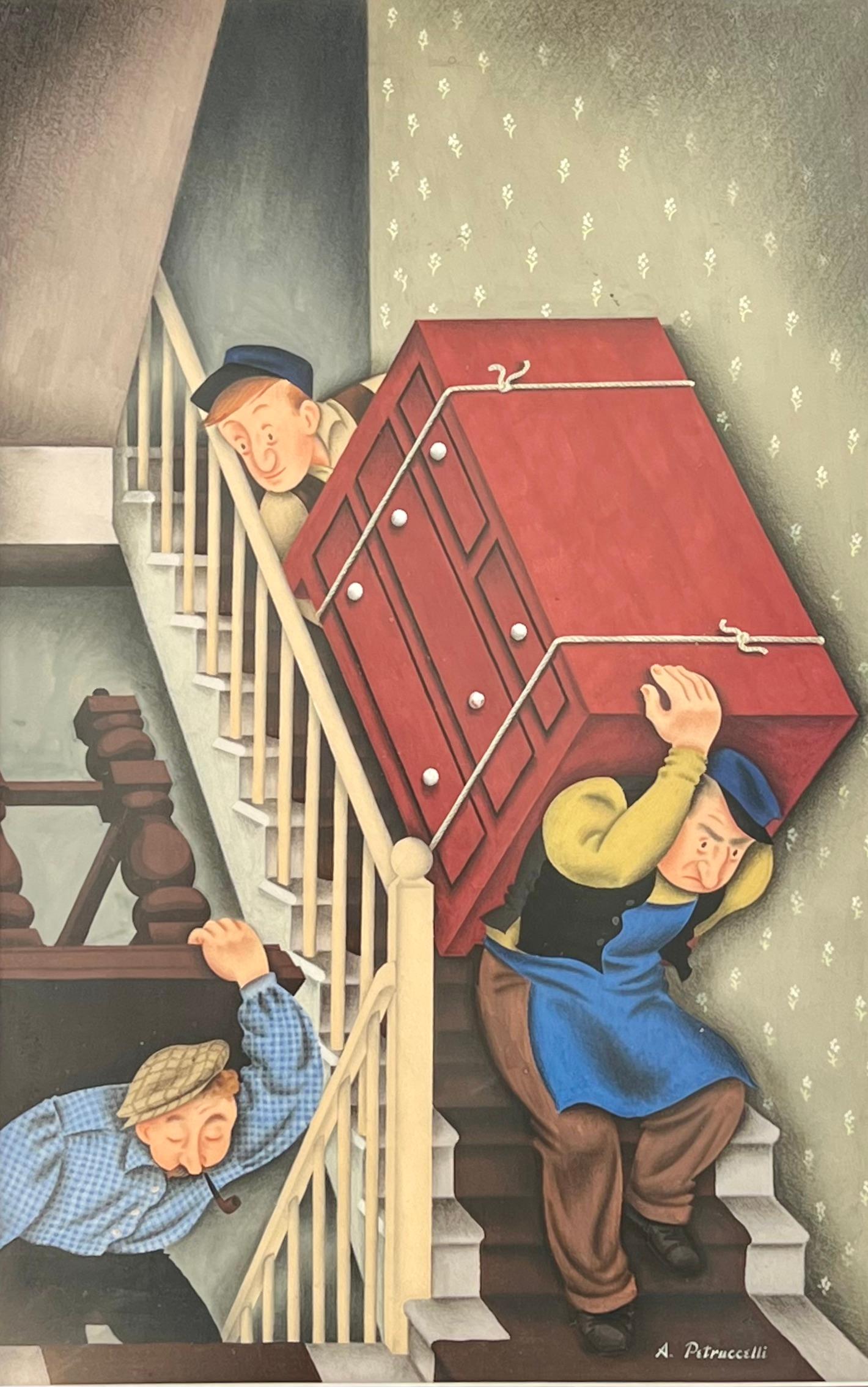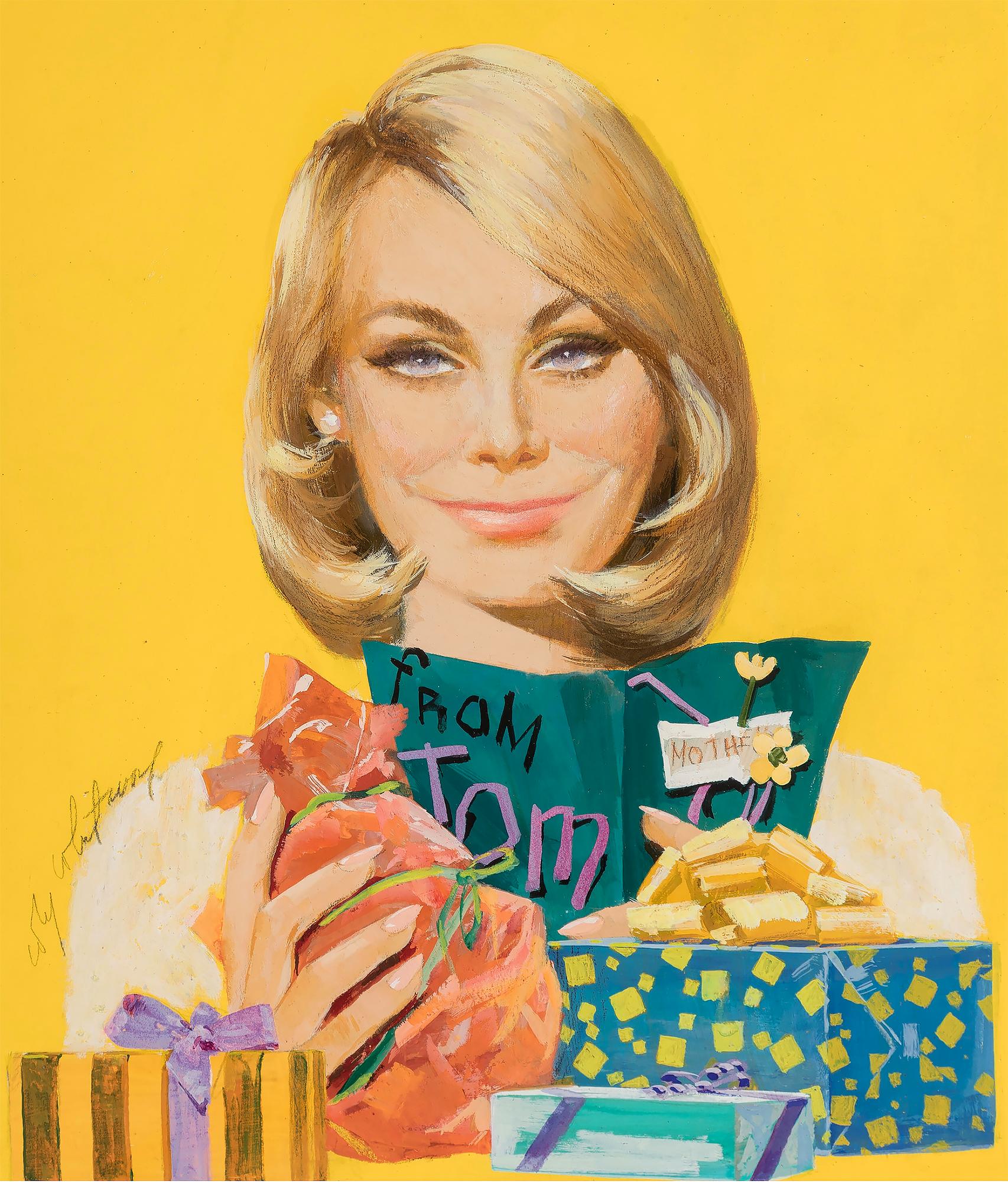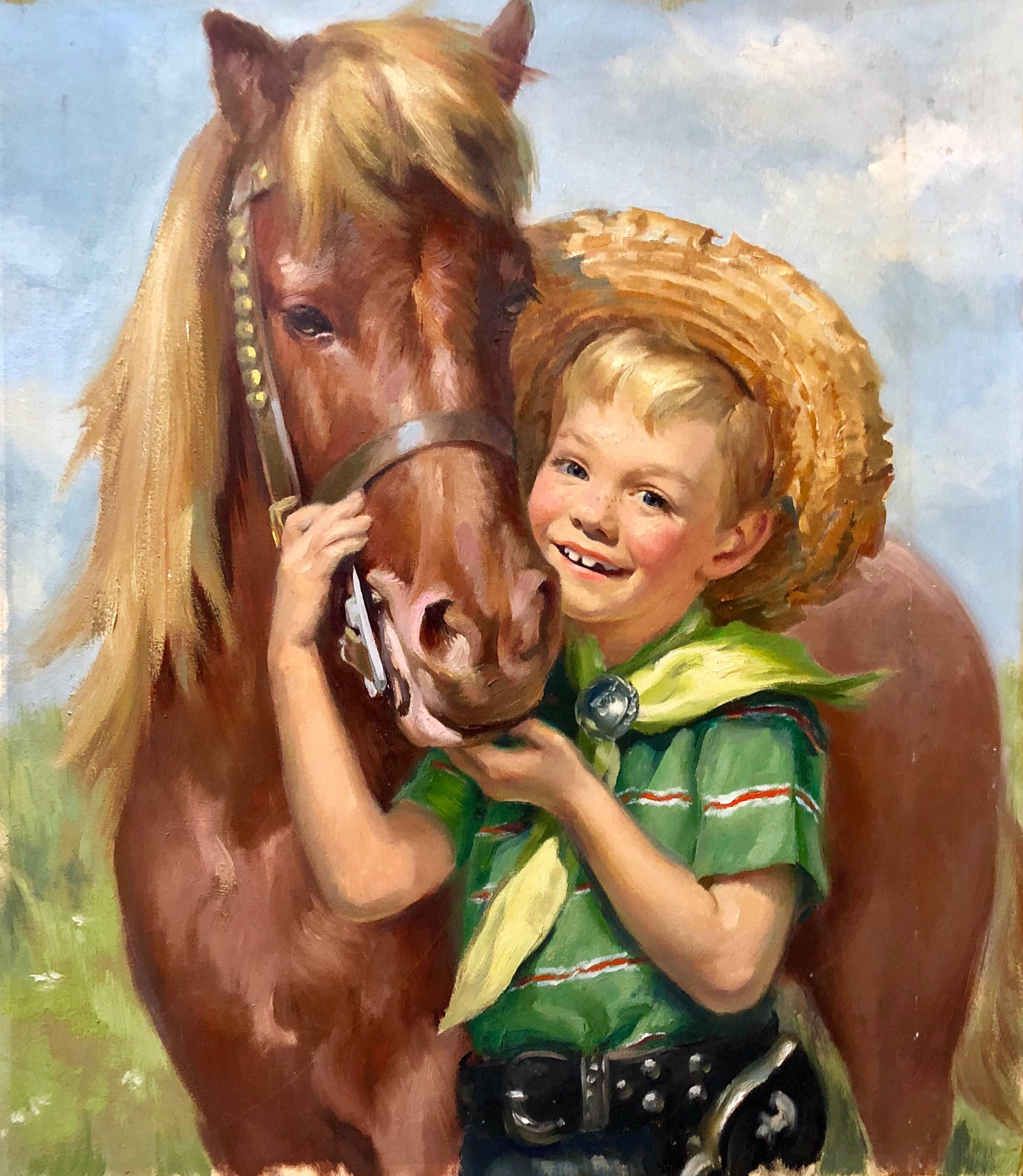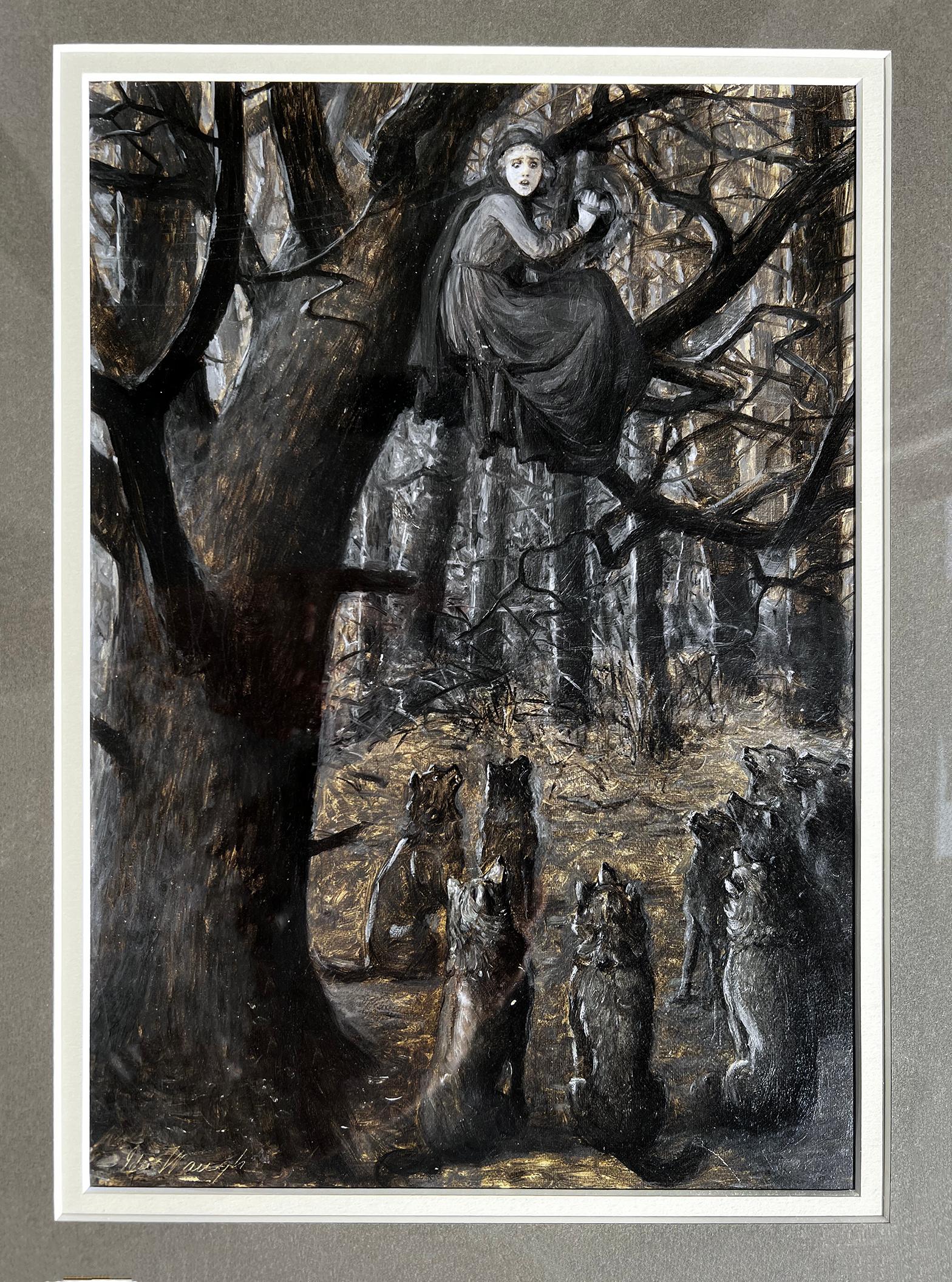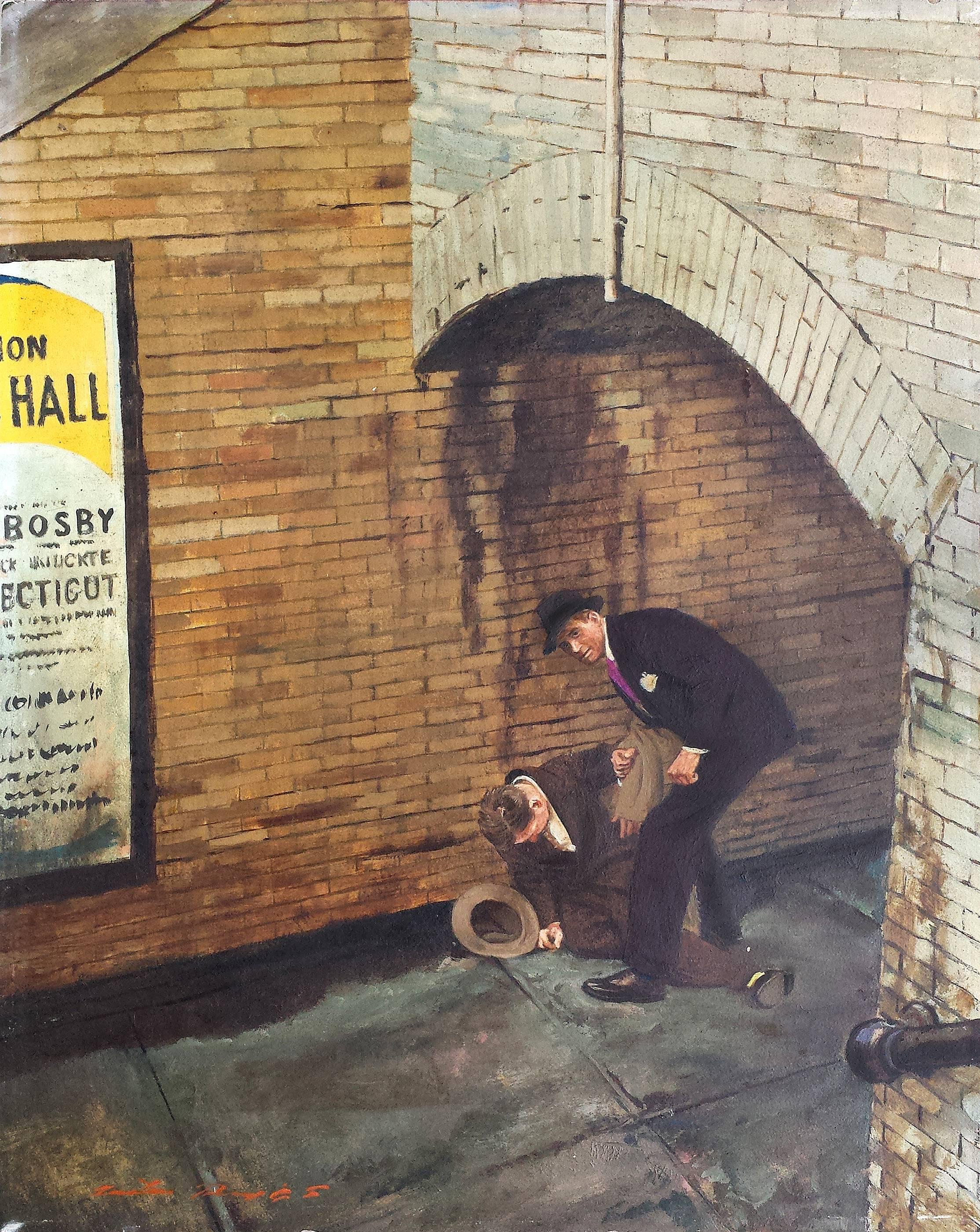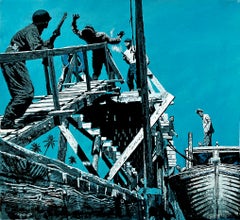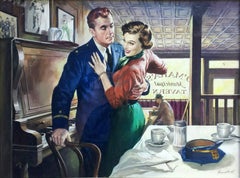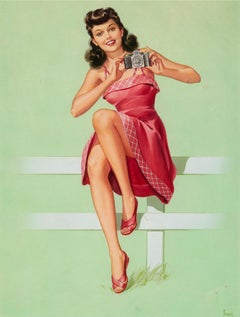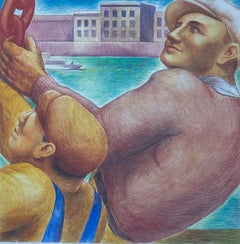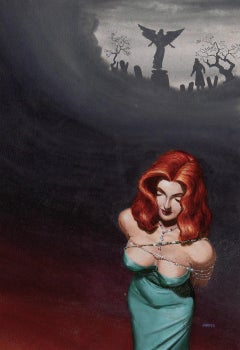
The Broken Angel
1 of 9
Mel HunterThe Broken Angel1958
1958
About the Item
- Creator:Mel Hunter (1927 - 2004, American)
- Creation Year:1958
- Dimensions:Height: 20.5 in (52.07 cm)Width: 16 in (40.64 cm)Depth: 1 in (2.54 cm)
- Medium:
- Movement & Style:
- Period:
- Condition:
- Gallery Location:Minneapolis, MN
- Reference Number:1stDibs: LU12223030603
Authenticity Guarantee
In the unlikely event there’s an issue with an item’s authenticity, contact us within 1 year for a full refund. DetailsMoney-Back Guarantee
If your item is not as described, is damaged in transit, or does not arrive, contact us within 7 days for a full refund. Details24-Hour Cancellation
You have a 24-hour grace period in which to reconsider your purchase, with no questions asked.Vetted Professional Sellers
Our world-class sellers must adhere to strict standards for service and quality, maintaining the integrity of our listings.Price-Match Guarantee
If you find that a seller listed the same item for a lower price elsewhere, we’ll match it.Trusted Global Delivery
Our best-in-class carrier network provides specialized shipping options worldwide, including custom delivery.You May Also Like
Pulp Magazine Marine Combat Scene Shoot Out in Blue Noir
Located in Miami, FL
What makes this work important?
It's not that it's a commissioned artwork for a men's 60s pulp adventure magazine depicting the instant a soldier is shot. The big point of the painting is how brilliantly the formal elements are thought out, designed, and executed. John McDermott tells a story using a complex figural composition in an unexpected wide-angle vision. The work is as abstract as it is representation. His use of light is significant because it creates a high-contrast two-color style that bears the mark of its creator. This is a work done by a master artist/illustrator without peers compared to artists living today. If the contemporary art world gave awards for draftsmanship, painting technique, and graphic design .... John McDermott would win the highest accolades.
Initialed lower left - unframed
John McDermott (August 30, 1919 – April 20, 1977), also known under the pen names J.M. Ryan and Mariner, was an American illustrator and author noted for action and adventure illustrations.[1] McDermott worked as an in-between and effects animator for Walt Disney Studios and as a US Marine combat artist,before establishing himself as a cover illustrator for 1950s paperbacks and pulp magazines such as Argosy, American Weekly, and Outdoor Life. Under his J.M. Ryan pen name, he wrote the novels The Rat Factory (1971), a derogatory satire of Walt Disney and the Disney studio; Brooks Wilson Ltd (1967), on which the 1970 film Loving was based; and Mother's Day (1969) about Ma Barker. Under his own name, he novelized director-writer Bo Widerberg's screenplay for the 1971 film Joe Hill, which would be his final published book.
Early life
John Richard McDermott was born 30 August 1919 in Pueblo, Colorado, the younger of two sons of Henry McDermott, an oil broker. McDermott was a young child when his father committed suicide.[4] The family eventually moved to Los Angeles where McDermott's mother, Hazel, worked in a beauty parlor. He graduated from Hollywood High School in 1936. Although he had had no formal art education, he took a job as an artist at Walt Disney Animation Studios.
Career
Disney
At Disney, McDermott worked as an in-betweener and effects animator on Brave Little Tailor, Pinocchio, The Reluctant Dragon and Fantasia. His experiences while working at Disney, particularly during the time of the 1941 Disney animators' strike, would later become the basis for his 1969 satirical novel The Rat Factory. McDermott left Disney to fight with US forces during World War II.
US Marines
McDermott World War II sketch titled "Buddy is Wounded"
On September 29, 1942, McDermott enlisted with the US Marine Corps. He served as a "pistol and palette" combat artist assigned to the map-making section. As a sergeant with the III Amphibious Corps, McDermott was involved in battles in the South Pacific theater of war, documenting the Guam, Okinawa and the Guadalcanal Campaigns. McDermott considered his wartime years to be his art education.
"In the Marines, as a combat artist, I traveled with the troops and for three years got all the drawing opportunity anyone could want. My work changed enormously during this time and I’m sure it was due to constant drawing, every single day, from life, just putting down what I saw around me. In a few instances it was a dangerous kind of scholarship."
According to the Marine Corps history journal Fortitudine, McDermott was so prolific that his contemporary style pen-and-ink sketches became easily recognizable to both Marines, from published work in Leatherneck Magazine, and civilians, from glossy copies supplied by the Marine Corps to the nation's press.His wartime art appears in World War II history books and is displayed at the Pentagon and the National Museum of the Marine Corps.
Illustration
Following the end of World War II, McDermott moved from California to New York City to work as a freelance illustrator. McDermott made his reputation drawing modern action, war and adventure scenes. His work adorned the covers and inside story pages of popular pulp magazines of the 1950s such as Argosy, Adventure, Blue Book, Outdoor Life and American Weekly.
McDermott's illustrations appeared on numerous covers of 1950s paperback novels published by Dell, Fawcett Gold Medal, Bantam Mystery and others. His action graphics were geared toward thriller and detective genres, such as Donald Hamilton's Matt Helm books Murderers' Row and The Betrayers. He also created covers for science fiction comic titles such as Voyage to the Deep[citation needed] and horror-themed paperbacks such as the classic 1955 science fiction novel The Body Snatchers...
Category
1960s American Realist Figurative Paintings
Materials
Gouache, Illustration Board
O MARA'S MUNICIPAL TAVERN - Saturday Evening Post Illustration
By George Garland
Located in Miami, FL
O MARA'S MUNICIPAL TAVERN - Saturday Evening Post Illustration
Supreme technical skill allows the artist to realistically capture an...
Category
1950s American Realist Figurative Paintings
Materials
Gouache, Illustration Board
Pin Up Girl in Red Dress, Mid-Century, Female Artist
By Pearl Frush
Located in Miami, FL
The Pin-Up of ravishing young beauties in mid-century America was a widely popular art form. The assumption that Pin-Up art was the exclusive domain of men is a misnomer. Female illu...
Category
1940s American Realist Figurative Paintings
Materials
Watercolor, Illustration Board
St, Louis River Mural Study American Scene Social Realism Mid 20th Century WPA
By Jo Cain
Located in New York, NY
St, Louis River Mural Study American Scene Social Realism Mid 20th Century WPA
Jo Cain (1904-2003)
The Drama of the St. Louis Great River
23 1/4 x 25 ½ inches
Gouache on board c. 19...
Category
1930s American Realist Figurative Paintings
Materials
Gouache, Board
Love Story. Mid Century Desaturated Color
By Jon Whitcomb
Located in Miami, FL
Most likely for Redbook, Cosmopolitan, Collier's Weekly, Good Housekeeping or Macall's
Category
1950s American Realist Figurative Paintings
Materials
Gouache, Board
Original Painting. Colliers Magazine Cover Published 1933 Wedding Illustration
By Antonio Petruccelli
Located in New York, NY
Original Painting. Colliers Magazine Cover Published 1933 Wedding Illustration
Antonio Petruccelli (1907 - 1994)
The Wedding
Colliers published, June 17, 1933
17 1/4 X 11 1/2 inches (sight)
Framed 23 1/4 X 17 1/2 inches
Gouache on board
Signed lower right
BIOGRAPHY:
Antonio Petruccelli (1907-1994) began his career as a textile designer. He became a freelance illustrator in 1932 after winning several House Beautiful cover illustration contests.
In addition to 24 Fortune magazine covers, four New Yorker covers, several for House Beautiful, Collier’s, and other magazines he did numerous illustrations for Life magazine from the 1930s – 60s.
‘Tony was Mr. Versatility for Fortune. He could do anything, from charts and diagrams to maps, illustrations, covers, and caricatures,’ said Francis Brennan, the former art director for Fortune.
Over the course of his career, Antonio won several important design awards, designing a U.S. Postage Stamp Commemorating the Steel Industry and designing the Bicentennial Medal...
Category
1930s American Realist Figurative Paintings
Materials
Gouache, Board
